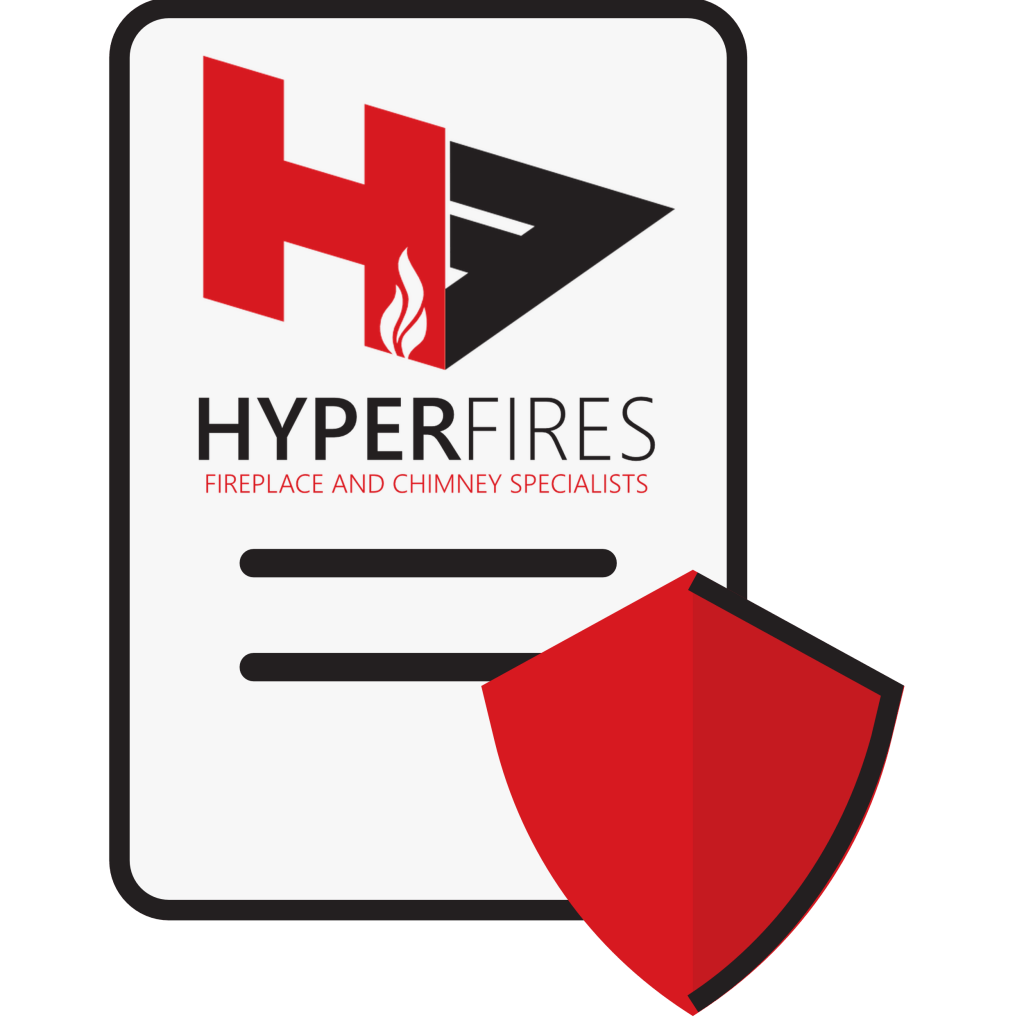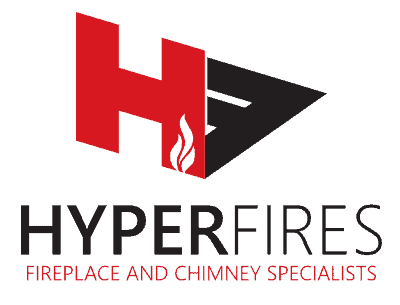No products in the cart.
Hyper Fires showcase
In our industry we see lots of fireplaces misused and this causes a drastic reduction in the life span of the fireplace and also a huge increase in the cost of maintenance.
A slow combustion fireplace is to be used as the name suggests – “slow” i.e. don’t feed the fire with too much air. The more air that is available to the fire, the more vigorously it will burn. Where oxygen binds with exposed steel surfaces it will oxidise, go brown and start to flake. Not many people realise but this process needs to be looked after yearly with maintenance.
Lighting your fire
- Place the dry seasoned wood (moisture content below 20%) in your fireplace with a fire starter under the wood.
- Leave the primary air lever fully open to allow a good flow of air to the fire. You will find the primary air lever at the bottom of the fireplace or look for the lever marked as primary.
- Leave the secondary air lever also fully open. This will be on top of the door or marked as secondary.
- Leave the door of the fireplace slightly open to create a good draught. This will also help to extract the carbon released from the start up, up the chimney instead of having it accumulate on the inside of the window glass. CAUTION - do not leave your fireplace unattended during this process where the door is open.
After about 25 mins your fire should be burning properly and should almost be the correct temperature.
- Shut the fireplace door.
- Close the primary air on the fireplace to between a quarter to a third of the way open. This will reduce excessive flow of oxygen through the floor plate and prevent the floor plate from warping.
- If the primary air lever is left open, it will also cause the fire to create a hotspot on the baffle above the fire. This will shorten the life span of the baffle through warping or cracking due to overheating.
- Always remember to clean your ash draw after each use, otherwise the ash will heat up and touch the bottom of your fireplace grate causing it to warp or burn though a lot quicker.
- If your wood is properly seasoned you should be able to close the secondary air vent which feeds air to the top of the fire to about 30-40% open.
- Your fireplace should now reach the optimum burning temperature of 350 degrees centigrade. At this point the gas and carbon that is released from the primary burn will be combusted and your fire will emit very little carbon.
- If your fireplace window and the inside of your fireplace goes black, then you will know that the wood is not properly seasoned and therefore you cannot reach the optimum temperature to get clean combustion. Normally when this happens, the operator of the fireplace must leave the air vents fully open to keep the fireplace going. This in turn will cause the excessive flow of oxygen through the unit again and cause more damage.
Please ensure the correct usage of your fireplace to lengthen its life span and reduce maintenance. These few simple steps can save you a lot of money in the long run.

In Image 1 the oxidation can be observed on the steel surfaces exposed to the fire. These surfaces must be sanded and re-coated at least once yearly.
In Images 2 and 3 you can see the damage caused by burning the primary air fully open. The floor plate has warped completely as a result of not cleaning the ash pan regularly. Also the accumulation of black carbon and creosote inside the combustion chamber can be observed. This is caused by poor combustion through the burning of wet wood. Also the disintegration of the baffle above the fire is clearly visible.











